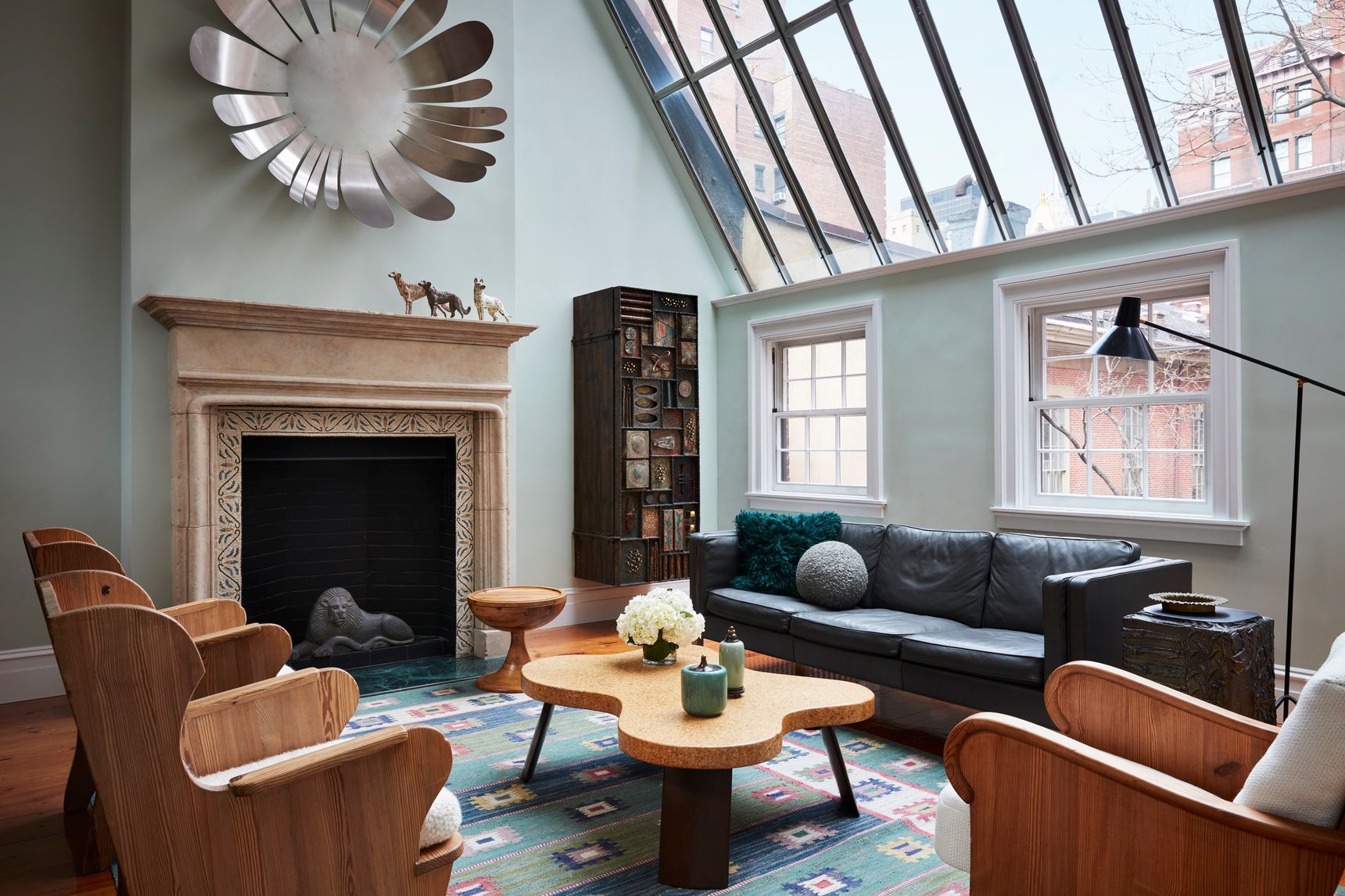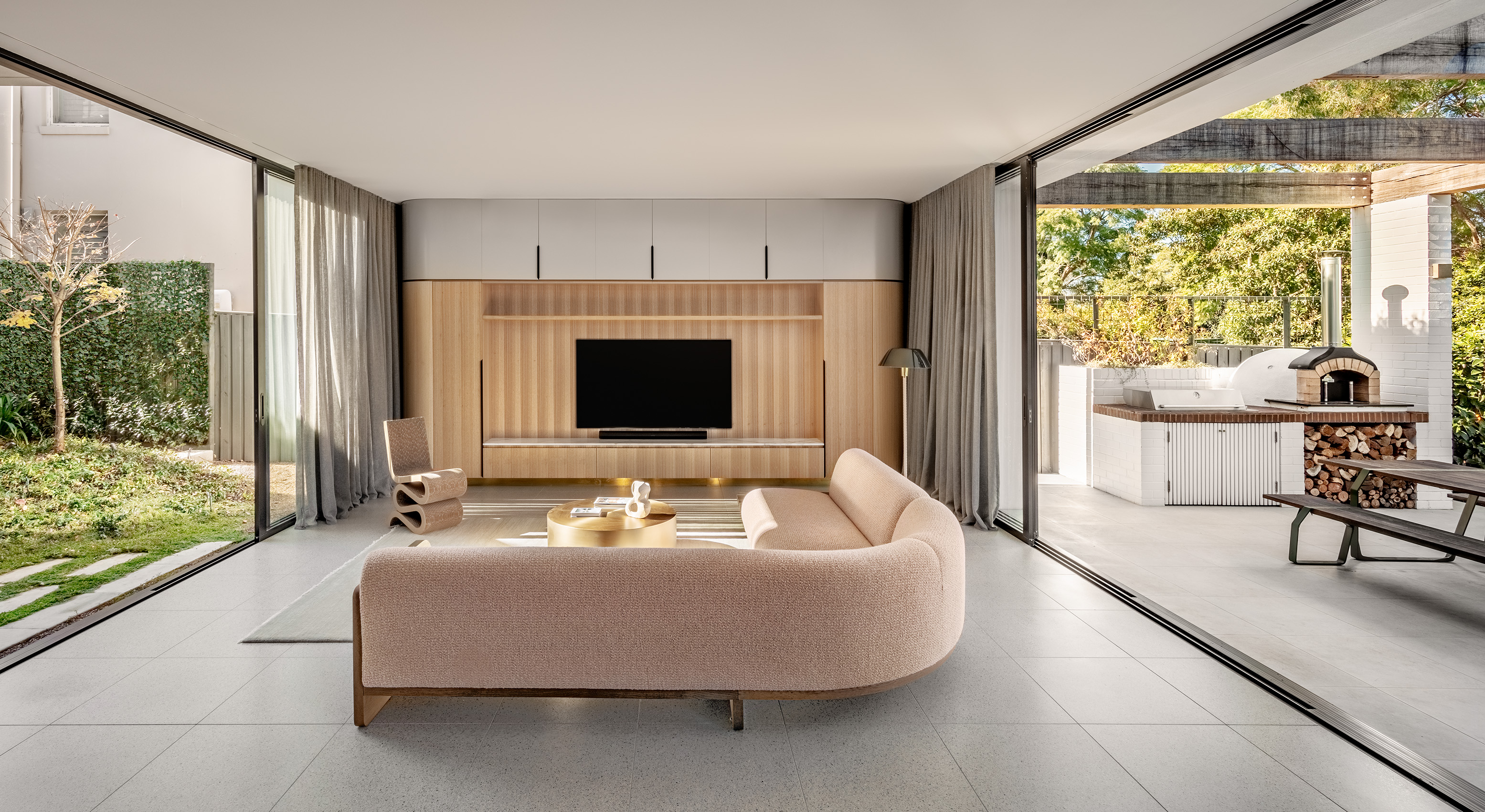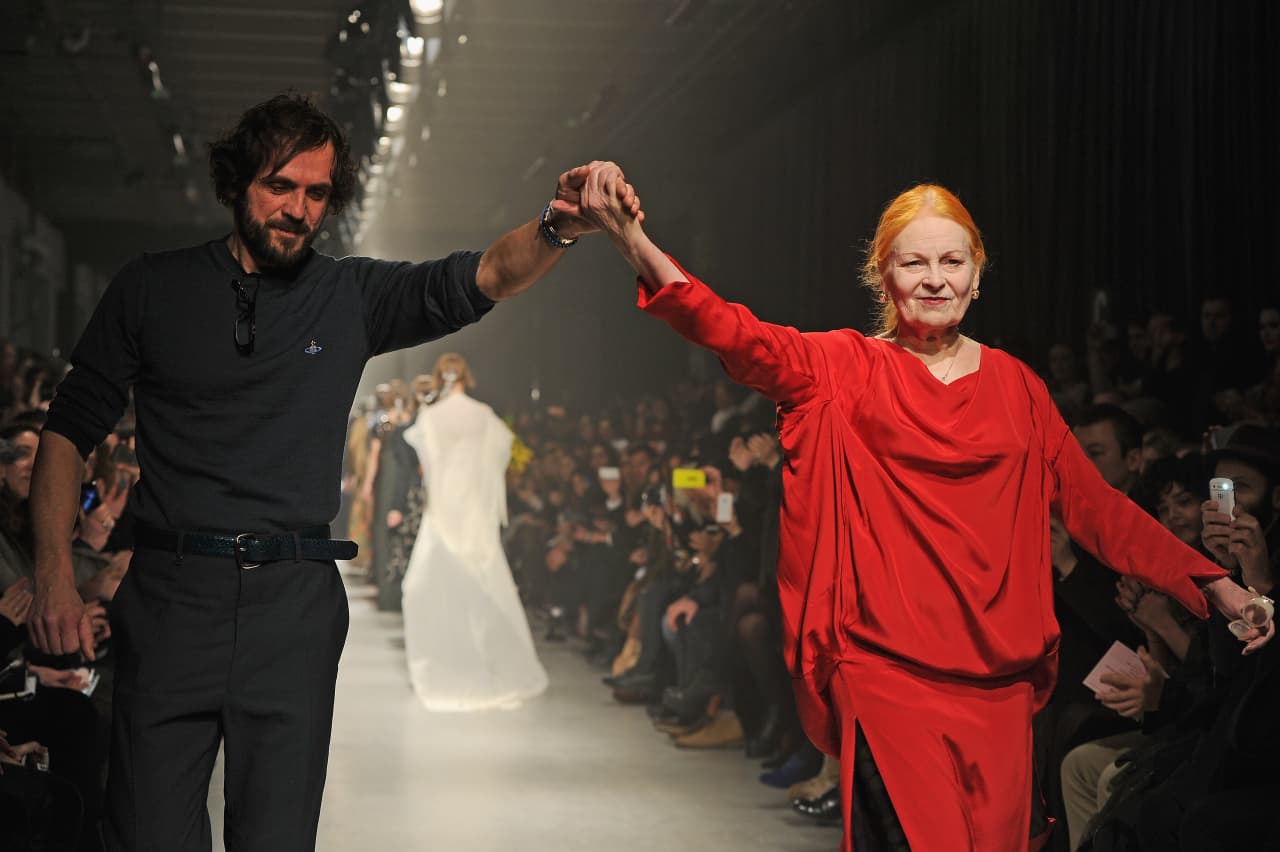How A Cluttered Townhouse Became A Soothing Oasis
Mike Rupp calmed a Manhattan house packed with chaotic decorating.
WHEN INTERIOR DESIGNER Mike Rupp accepted the task of revamping an 1843 Greek Revival townhouse in New York’s Gramercy neighbourhood, he knew it wouldn’t be a walk in the park. Decades of decoration by the client herself had yielded a cluttered, directionless space filled with traditional, oversize furniture in clashing colours and patterns. “Things were out of scale with the space, and colours didn’t harmonize,” said Mr. Rupp.
The collections the client and her husband had amassed added to the hodgepodge: art from travels to Africa and copious greyhound figurines inspired by their rescues of the oft-forsaken breed. The surfeit of stuff made visitors feel a bit like children in a preciously decorated house. “They’re not formal people,” Mr. Rupp said of the couple. “They’re casual and warmhearted and wanted guests to feel the same way.”
He introduced his client to the pared-back but handcrafted side of 20th-century modernism through artists and designers like Pierre Jeanneret, George Nakashima and Paul R. Evans. Sumptuous textures and a tight palette of blue and green pastels and neutrals further warmed the home, tying together 20th-century furniture, 19th-century architecture and many styles of art. “Don’t be afraid to surround yourself with colour,” said Mr. Rupp, “but it doesn’t have to be poppy, bold and aggressive.”
Tap the Quiet Power of Pale Blue
The second-floor parlour comprises a living and dining area, whose walls are clad in a nearly neutral pale blue paint, Whispering Spring from Benjamin Moore. In the dining space, Mr. Rupp upholstered the Wegner chairs that surround a walnut Nakashima table in a leather of a similarly muted blue. The black shades of the midcentury-styled chandelier visually connect to the shapes in a triptych by British artist Lisa Giles, and a geometrically patterned carved-wool rug with blue in the ground unifies the two rooms and “invites guests to get comfortable” on the carpet’s high pile.
Don’t Let a Bathroom Get Too Impersonal
The client fell for the furniture of Pierre Jeanneret during the design process—so much so that Mr. Rupp had to “put his foot down” to prevent her from buying too much—and so he took care to put a piece in the bathroom. “I wanted her to start her day with a piece that makes her happy,” he said. The biggest bathroom-design mistake? “Denying the space of [one’s] personality,” he said. “You don’t want to make it like a hotel bathroom.” Here, he added a Tuareg mat and the same paint as the parlor’s.
Weave Together the Handmade and Machine-Made
In the primary bedroom, Mr. Rupp covered the headboard in a Tuareg woven leather and reed mat from Morocco. “It brings colour and movement into the space,” he said. He painted the walls the same soft blue used elsewhere in the home. To balance out the room’s crafty elements, including the African mask that is part of the owners’ collection, he added a 1930s Swedish pewter lamp for “some aggressive metal.” Its gleam contrasts with the soft alpaca blanket and lamb’s wool pillow.
Integrate Off-Period Elements With a Coat of Paint
The Arts & Crafts fireplace in the parlor came from a 1992 renovation. “It was screaming at us to be changed,” Mr. Rupp said, but instead of replacing it, he painted the mantel a glossy black. “It gave it that modern edge.” The background in the painting over the mantel and the armchair’s leather again align with the home’s prevailing soft blue, but reds connect the accent pillows on the 1950s armchairs to bits of tile in the fireplace surround. Meanwhile, the curvilinear sofa clad in a fluffy lamb’s wool “beckons to be curled up on.”
For Tranquility, Connect Design to Nature
On the top floor of the home, Mr. Rupp continued to lean toward the clean lines of midcentury modernism executed in warm materials. Three curvaceous 1930s Axel Einar-Hjorth chairs in folksy pine encircle a cork-topped Paul Frankl Cloud coffee table from the 1950s. Blue leather softens the boxiness of the sofa, while on the walls, Benjamin Moore’s Hollingsworth Green, a pale sage, connects to the view of a backyard. Nature also gets a winky acknowledgment from a giant stainless-steel flower by late American sculptor Gloria Kischl. A 1940s Swedish rug hews to the home’s blue-green palette but adds touches of pink.
 Copyright 2020, Dow Jones & Company, Inc. All Rights Reserved Worldwide. LEARN MORE
Copyright 2020, Dow Jones & Company, Inc. All Rights Reserved Worldwide. LEARN MORE
This stylish family home combines a classic palette and finishes with a flexible floorplan
Just 55 minutes from Sydney, make this your creative getaway located in the majestic Hawkesbury region.
Futureproof your home and maximise your return with design directions that focus on contemporary ways of living
Looking to build, or renovate, a home in 2024? You’re not alone. According to a recent study from Resolve Finance, over a third of Australian homeowners are planning to renovate their current properties in the next 12 months. And if the Federal Government achieves its ambitious goal of delivering 1.2 million new dwellings over the next five years, there will be many new home owners looking to build their dream home in 2024 and beyond.
But before tackling such a behemoth task, considering all the latest—and future—architectural trends is pivotal in your new build’s success. Award-winning architect and interior designer, Georgina Wilson said sustainability will be at the forefront for many interested in energy efficiency and saving money on power bills.
“Elements of passive design are moving into the mainstream. Improvements in the technology with double glazing, building wrapping and insulation are meaning that more people have access to these materials,” Ms Wilson said. “Solar has proven itself and homeowners are now looking for other ways to make their home more efficient.”
The following eight trends reflect a growing emphasis on sustainability, flexibility, and wellbeing in residential architecture, catering to the evolving needs and preferences of homeowners in 2024.
—
1). Consider your colour palette
The colours you use say everything about the type of spaces you want to foster, whether they be bright and warm, dark and moody, neutral — the list goes on. If we’re looking to trends, earthy, calming neutrals are in — think brown, beige and eucalyptus green. Colours that feel natural and soft, but welcoming provide an inviting environment that’s easy to live with.
However, interior designer and stylist, Jono Fleming said contrast is important to create interest and one of the most powerful ways to do this is through colour.
“It doesn’t have to be a big splash of colour, it could be introduced through smaller decorative objects, a statement furniture piece or an artwork, but the colour should add balance to the space,” he said.
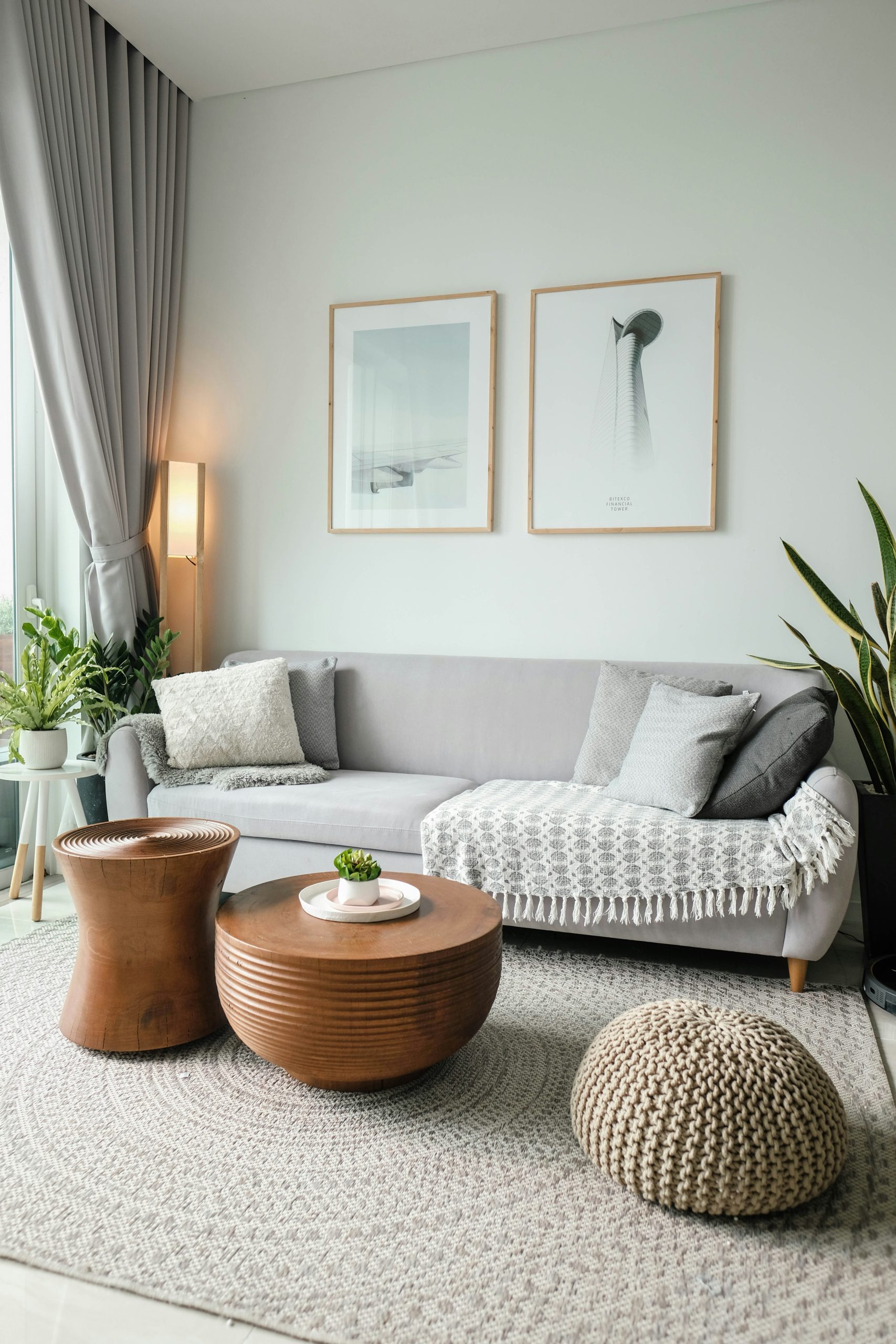
2). Modern, outdoor living areas
Ever since the COVID pandemic and subsequent lockdowns, expanding living spaces to the outdoors has gained in popularity. Features like plant-filled front porches, outdoor kitchens, fire pits, and cosy seating areas create inviting spaces for relaxation and entertainment for all family members.
“There has definitely been a greater appreciation for outdoor living spaces since COVID,” said Ms Wilson. “Outdoor fabrics and mechanisms for shading have greatly improved in recent years allowing people to fully embrace seamless indoor/outdoor living.”
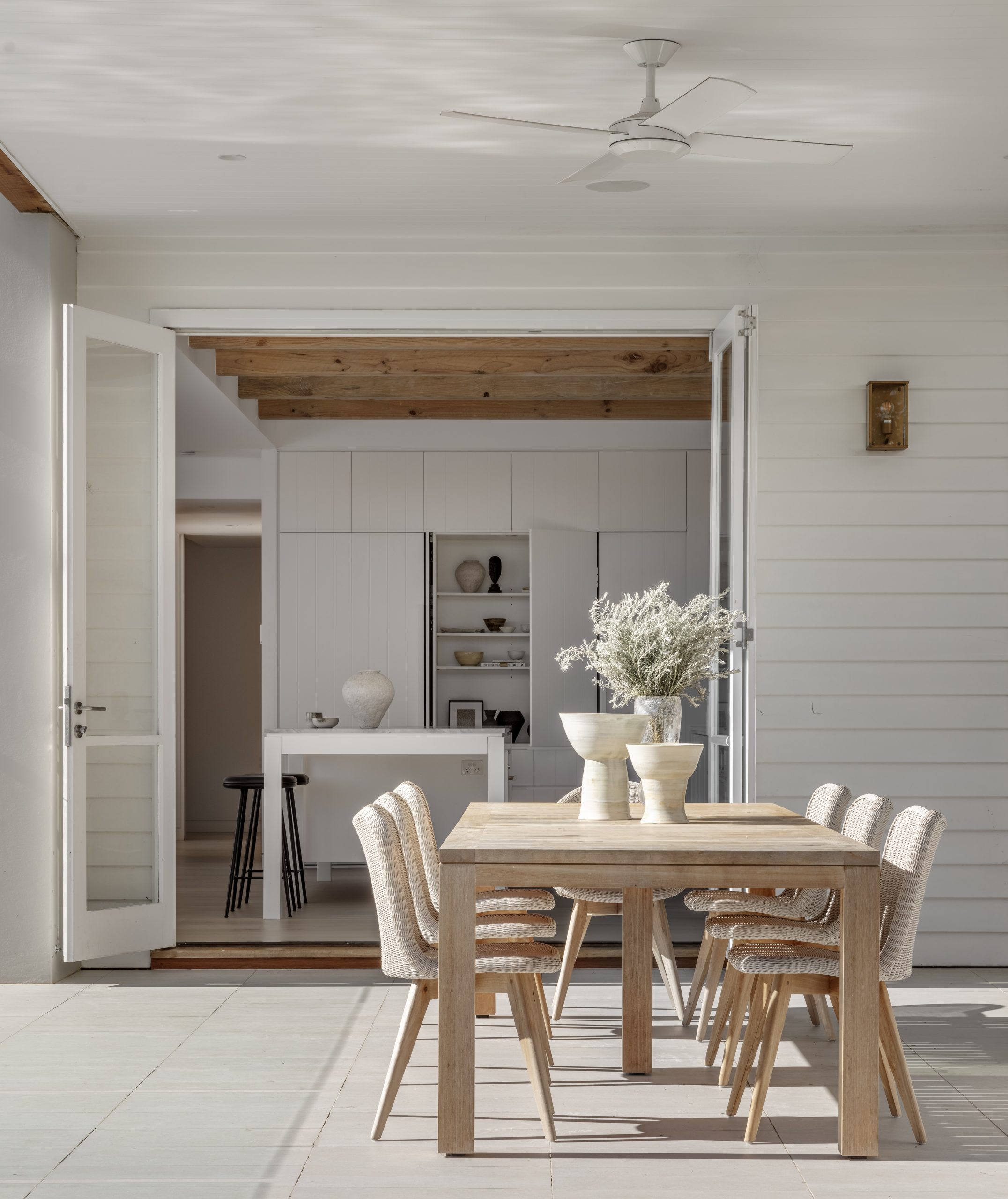
3). The integration of smart technology
Integrating smart home technology throughout your home continues to gain traction with homeowners. As we increasingly look to rely on technology to make our lives all the more seamless, smart technology throughout allows homeowners to control a variety of tasks and zones remotely, enhancing convenience, security, and even energy efficiency. This can include controlled heating and cooling from your phone, automatic lightning, voice control commands, and more.
“The technology for seamless appliances has come a long way. At Salone del Mobile Milano this year, we experienced the new Gaggenau fully integrated induction bench top, which in terms of kitchen design, is a huge advancement,” said Ms Wilson.
Gaggenau, the German manufacturer of high-end home appliances, is at the forefront of smart home technology, paving the way for intelligent cooking appliances that learn and adapt to user preferences. Gaggenau’s essential induction cooktop, the functional and seamless cooking surface Ms Wilson speaks of (pictured below), is designed to be “seamlessly integrated into a kitchen’s worktop”.
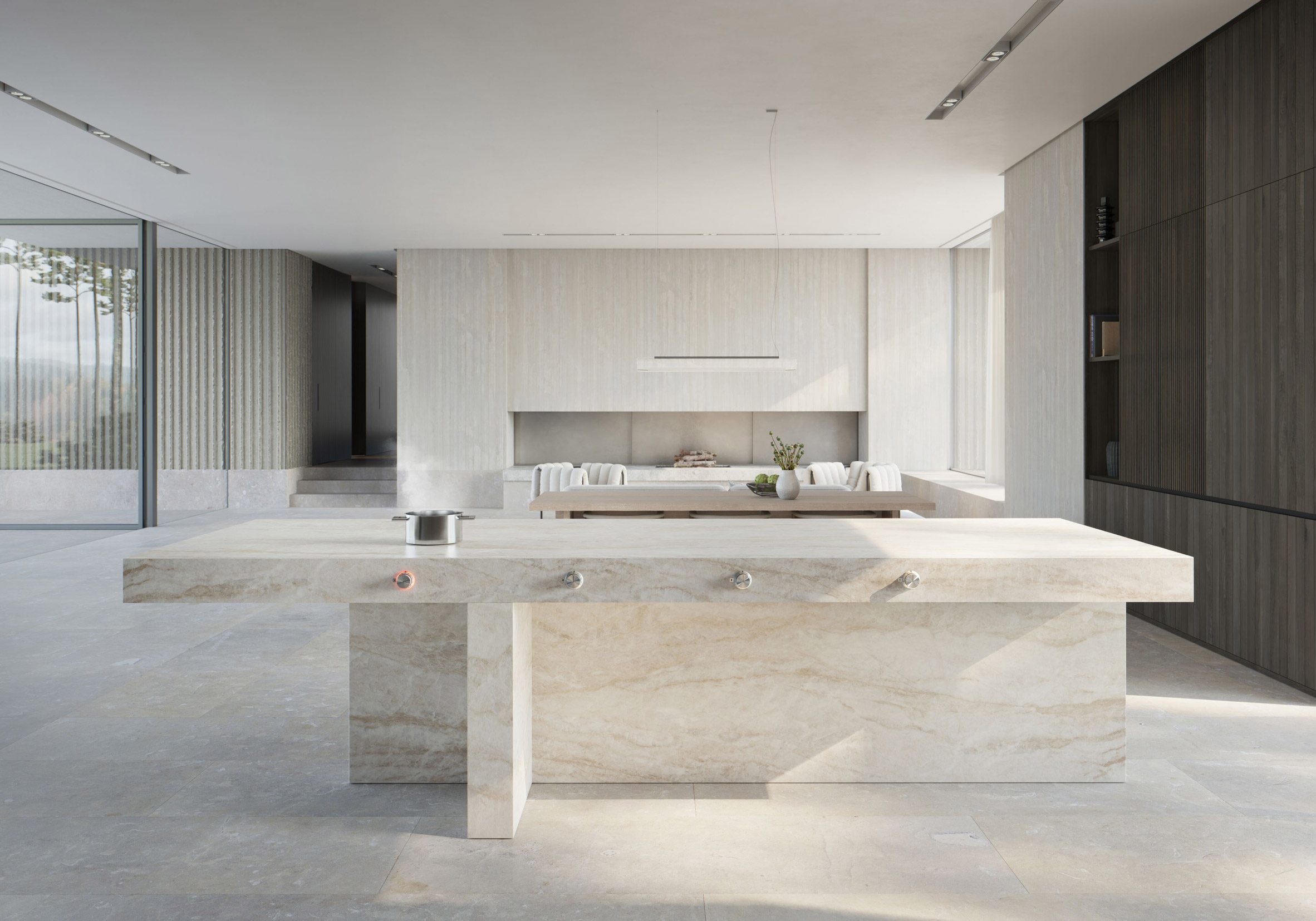
4). Health and wellness features
Prioritising health and wellness in 2024 is paramount, and home design that can include features like air purification systems, dedicated exercise spaces, recovering hubs—like saunas and ice baths—and relaxation areas to support physical and mental wellbeing will go a long way in not only adding value to your home, but providing a space that is architecturally on-trend and with the times.
“I’m seeing a lot of demand for in-built saunas, both traditional and infrared, particularly in the homes of our US clients,” said Ms Wilson.
“Bathroom suppliers such as Kohler, Duravit and Toto are offering increasingly sophisticated products that incorporate an almost spa-like experience in your at home bathroom. Examples of this are fantastic multi-nozzle showers and steam showers, Japanese toilets incorporating bidet technology, and elegant and serene bathroom furniture that can be fully customised for clients.”
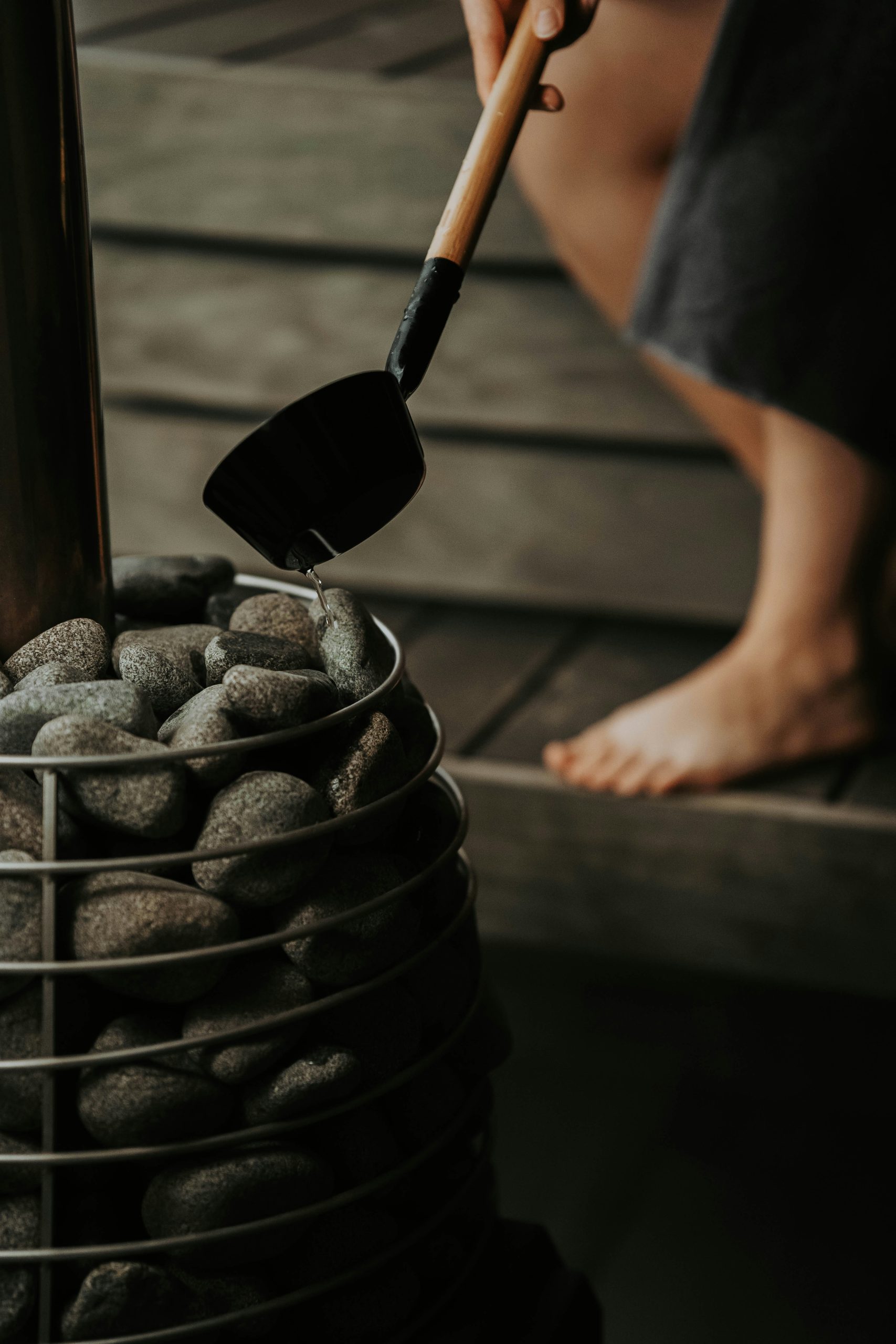
5). Sustainability is key
A common goal among homeowners and future buyers alike is to own a property that is flexible enough grow with them. Futureproofing your home with sustainable measures will not only ensure its longevity, but it will help homeowners to play their part in addressing their carbon footprint.
“The current cost of living crisis is leading to a lot more multigenerational living, meaning families are prioritising durable materials and sustainable power sources, like solar,” said Ms Wilson.
Consider adding solar panels to your home, utilising sustainable materials in any upcoming renovations or builds, like recycled timber, and utilising energy-efficient lighting throughout your home.
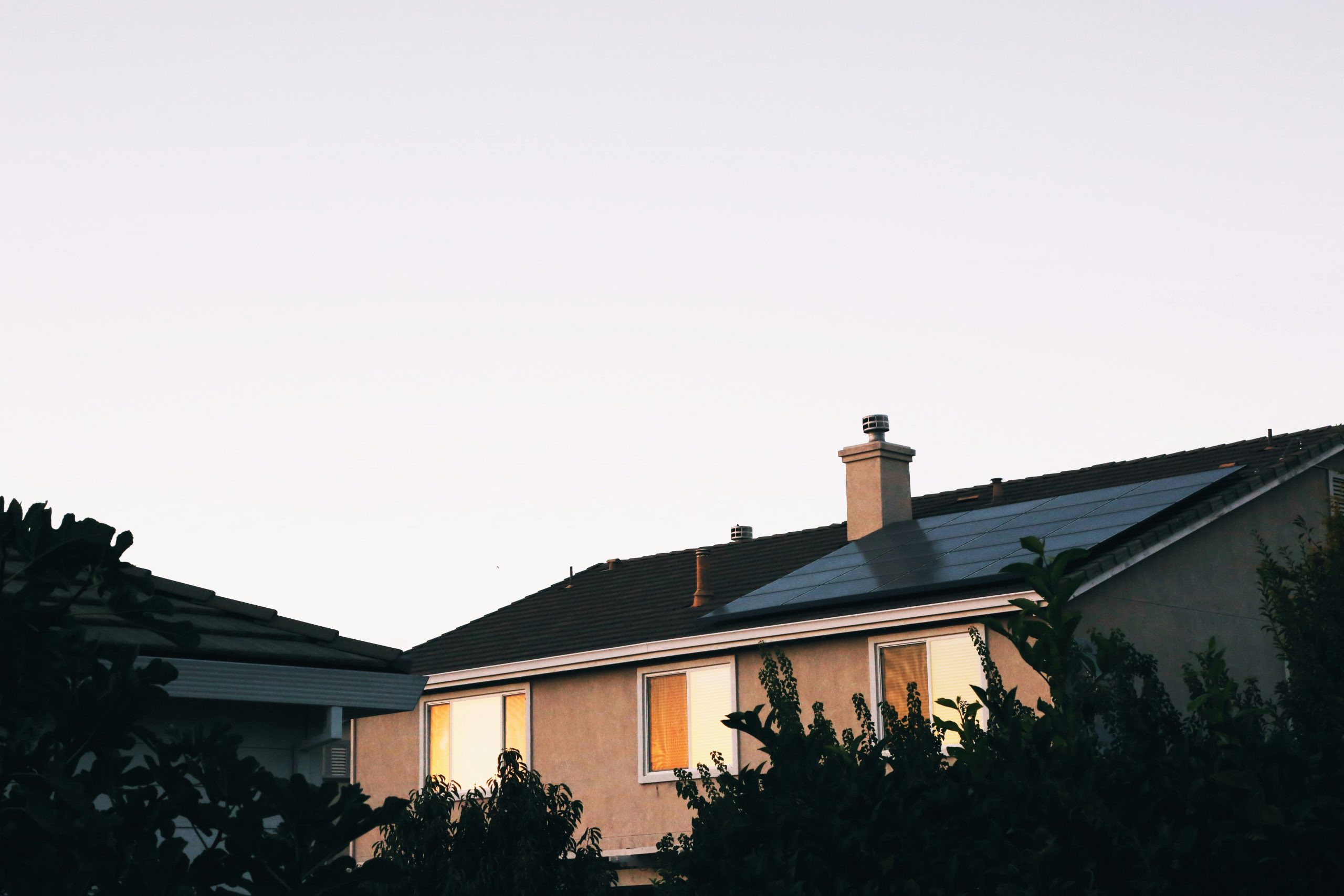
6). Minimalist design
Do as the Scandinavians do – introduce minimalist design into your home. Embrace simplicity and clean lines with a focus on interior design. Decluttering in main living spaces is surprisingly effective. Adopting the approach of ‘Swedish Death Cleaning’, which essentially involves slowly ridding your house of unwanted or unused items once you reach the other side of 50, will also help you whittle your possessions down to the beautiful and the necessary.
Minimalist design in home appliances is also making a resurgence in 2024 according to Ms Wilson.
“What I’ve been interested to see at Salone del Mobile Milano in 2024 is a huge return to stainless steel finishes, and more and more seamless integration of appliances,” said Ms Wilson.
“We’re seeing timeless materials in reimagined applications: copper baths and stainless steel basins are emerging trends with the potential to be timeless. These materials are so practical, and pair beautifully with natural stone and timbers.”
Above all, maximising different spaces through efficient and effective storage options will also do wonders in achieving that minimal aesthetic.
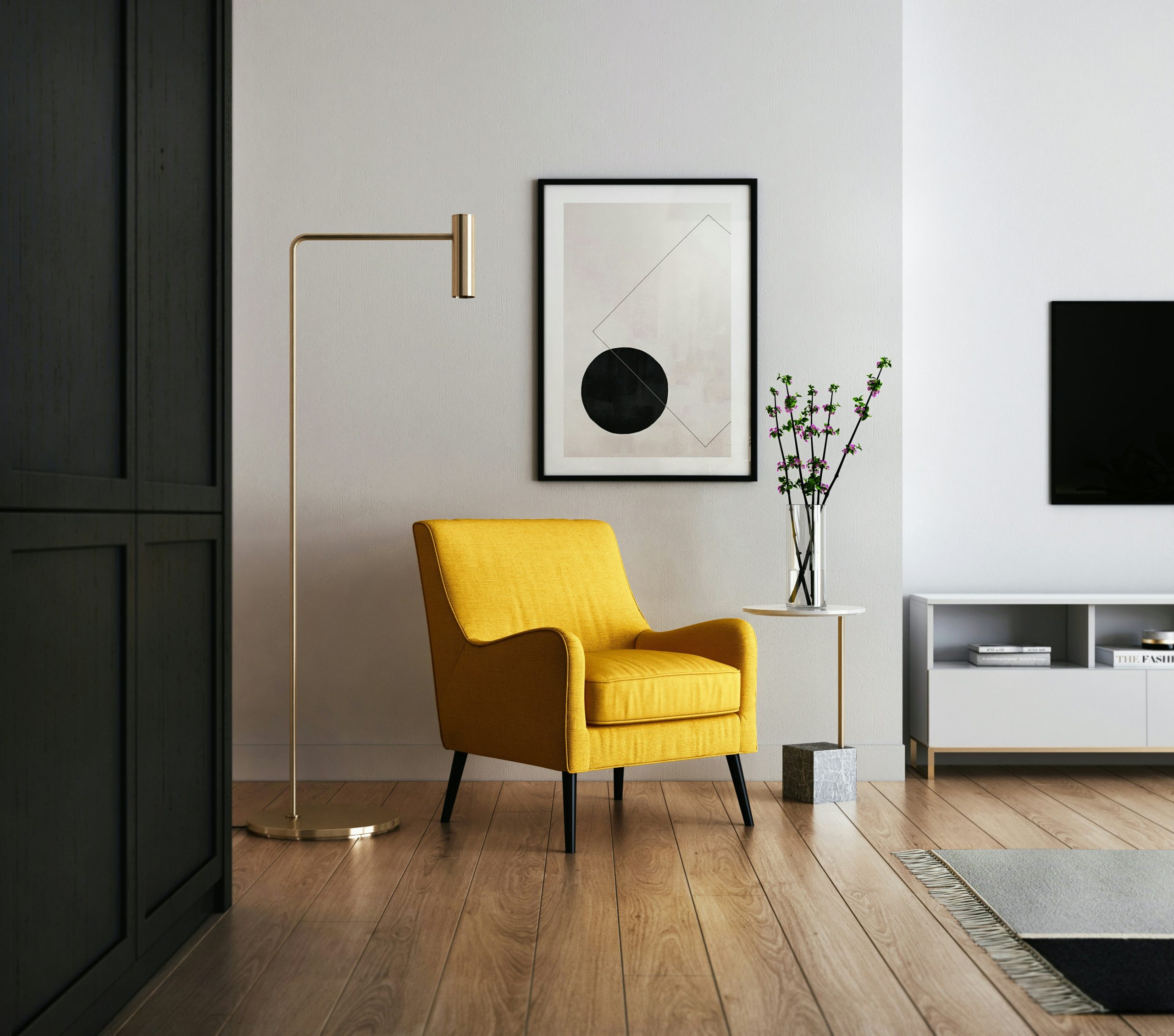
7). Multifunctional spaces
As we move towards greater efficiency of space, it’s useful to consider multifunctional spaces throughout your home. In 2024, we are seeing more homes incorporate multifunctional spaces and trends. This includes using multifunctional furniture in main bedrooms or living spaces—furniture that can act as storage ottomans or convertible sofa beds—as well as transforming wasted space, and open up indoor to outdoor living.
“Multifunctional spaces in homes are a great idea. Particularly in small homes, it makes a lot of sense to achieve maximum value out of the limited space available. The way you use a space can change as your family evolves over time, so it’s always good to design in such a way that allows for flexibility,” said Ms Wilson.
“Make sure that the functions you allocate to a single room are compatible with the space available and each other. For example, it works really well to combine a living room, a dining room and a kitchen in one open plan space because these are all public, lively spaces. It doesn’t work very well to combine, say a study, with these spaces because you will want control over the visual and acoustic privacy in a study.”

8). Think about biophilic design
A buzz word among architects and interior designers, biophilic design is one of the strongest trends in 2024 thanks to its benefits in garnering a sense of harmony and connection between your home and the environment. Consider incorporating natural elements into home design, such as large windows to maximise natural light, indoor gardens, and natural materials like wood and stone.
“Biophilic design is a timeless principle, in that home design should connect people in a positive way with their natural environment by maximising access to, and the ability to control, natural light and ventilation, which really helps to create an enjoyable (and healthier) environment to live in,” said Ms Wilson.
“Increasingly, there is a demand for this positive relationship to the natural environment; by leaning on the principles of biophilic design, you can create a haven and retreat at home that can help with the daily stresses of life.”
Ways to foster that indoor-outdoor connection can be through the addition of smaller internal courtyard spaces filled with greenery, or incorporating indoor plants and adding greenery into different rooms throughout your home.
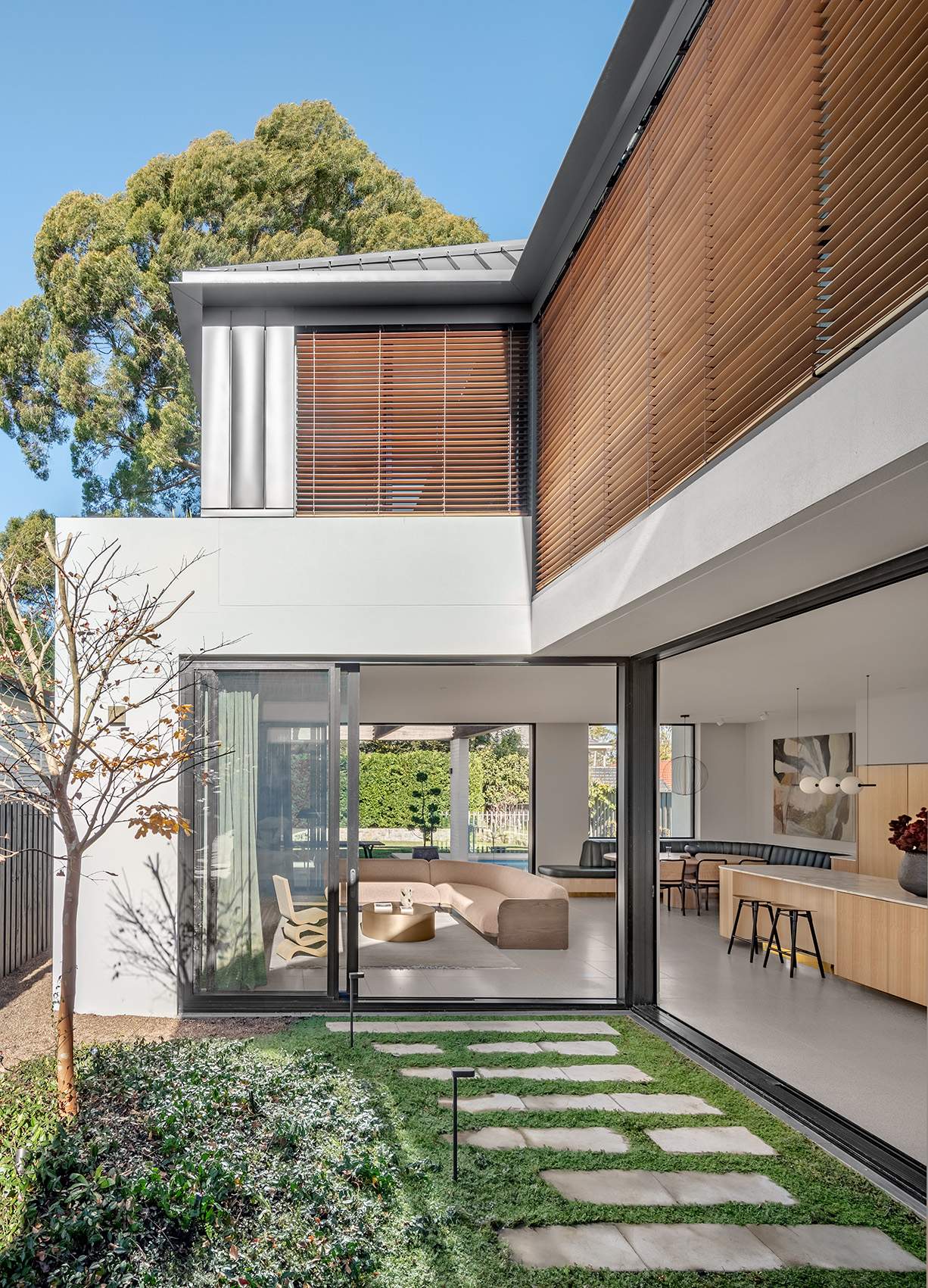
—
Just 55 minutes from Sydney, make this your creative getaway located in the majestic Hawkesbury region.
This stylish family home combines a classic palette and finishes with a flexible floorplan









